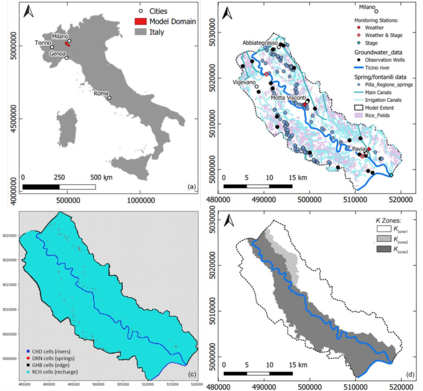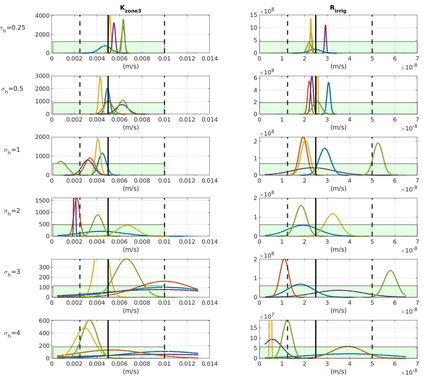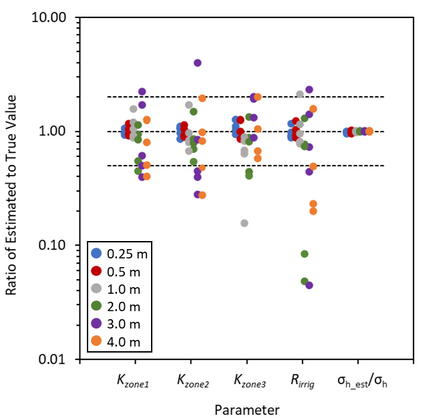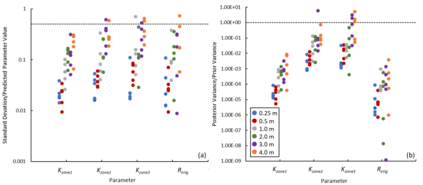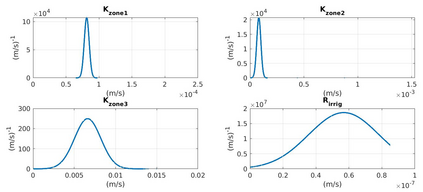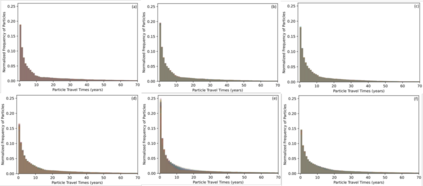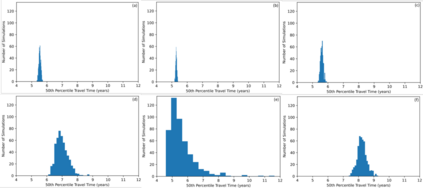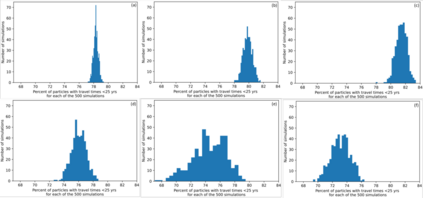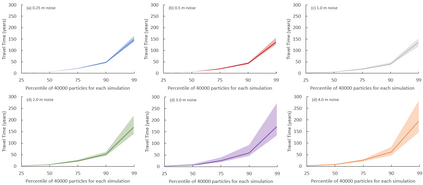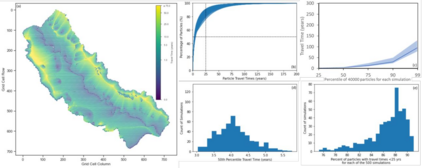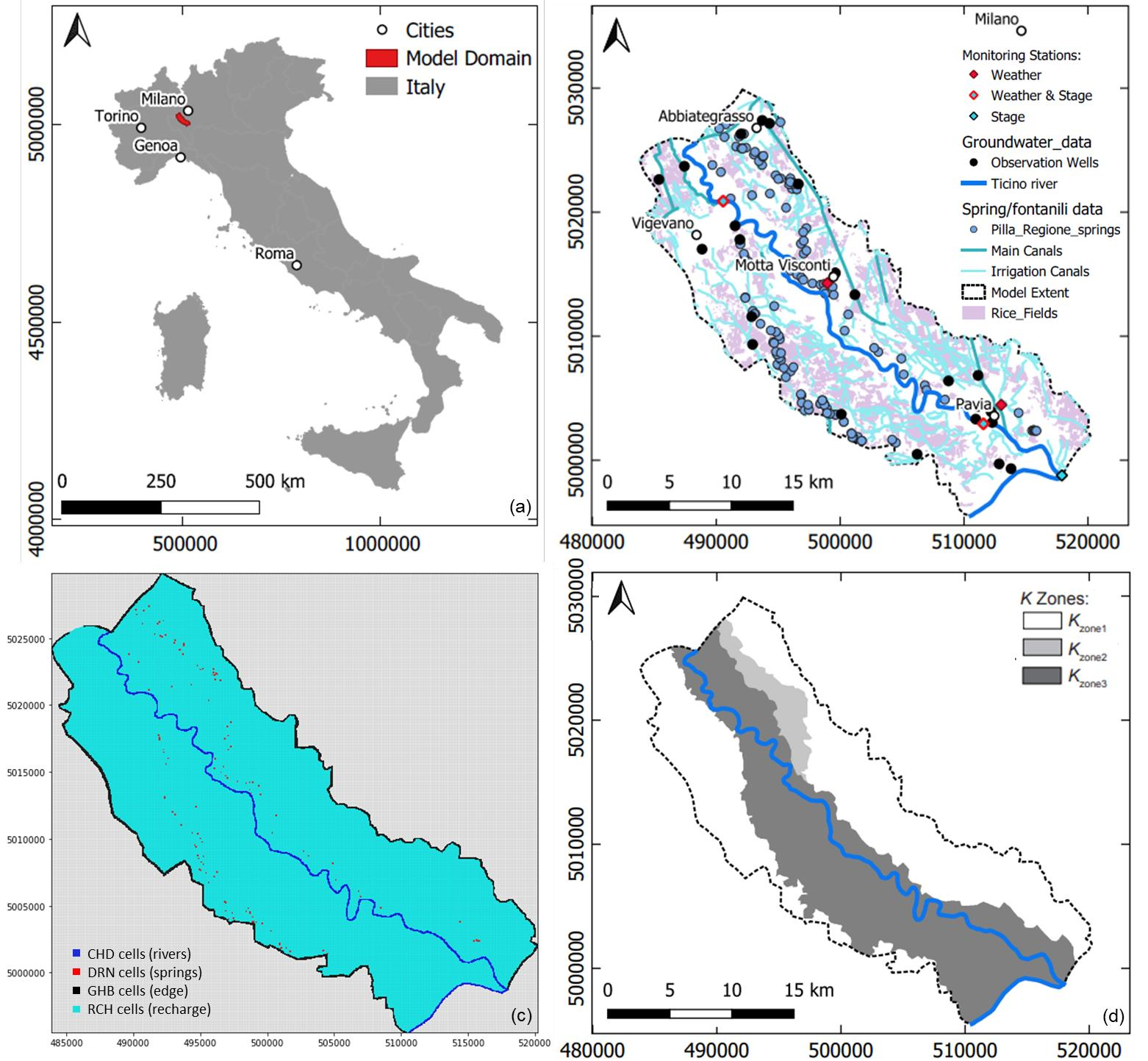Groundwater flow modeling is commonly used to calculate groundwater heads, estimate groundwater flow paths and travel times, and provide insights into solute transport processes within an aquifer. However, the values of input parameters that drive groundwater flow models are often highly uncertain due to subsurface heterogeneity and geologic complexity in combination with lack of measurements/unreliable measurements. This uncertainty affects the accuracy and reliability of model outputs. Therefore, parameters' uncertainty must be quantified before adopting the model as an engineering tool. In this study, we model the uncertain parameters as random variables and use a Bayesian inversion approach to obtain a posterior,data-informed, probability density function (pdf) for them: in particular, the likelihood function we consider takes into account both well measurements and "expert knowledge" about the extent of the springs in the domain under study. To keep the modelistic and computational complexities under control, we assume Gaussianity of the posterior pdf of the parameters. To corroborate this assumption, we run an identifiability analysis of the model: we apply the inversion procedure to several sets of synthetic data polluted by increasing levels of noise, and we determine at which levels of noise we can effectively recover the "true value" of the parameters. We then move to real well data (coming from the Ticino River basin, in northern Italy, and spanning a month in summer 2014), and use the posterior pdf of the parameters as a starting point to perform an Uncertainty Quantification analysis on groundwater travel-time distributions.
翻译:地下水流模型通常用于计算地下水头、估计地下水流路径和旅行时间,并对含水层内的溶液运输过程提供洞察力。然而,驱动地下水流模型的输入参数值往往由于地表下层异质和地质复杂性,加上缺乏测量/不可靠的测量结果,因此,不确定性影响模型产出的准确性和可靠性。因此,参数的不确定性必须量化,然后才采用模型作为工程工具。在本研究中,我们将不确定参数作为随机变量进行模型模型模型模型模型的模型,并使用巴耶斯反向法方法,为这些参数获得一个后表层、数据知情、概率密度功能(pdf),特别是,我们所考虑的参数的概率功能往往非常不确定,因为地下水泉的测量和“专家知识”范围不强。为了控制模型产出的精确性和可靠性,我们假定参数的后部的参数具有可计量性。为了证实这一假设,我们用Bayesian的参数分析:我们用回移程序对数组合成数据进行污染,开始测测测测测测,我们用河底的噪音值,然后从Rivo 开始,我们用一个水平,我们从Ribilal 恢复一个数据,然后在意大利恢复一个水平,我们从Ribal Ribal 进行一个水平,我们可以确定一个水平,然后恢复一个水平。

